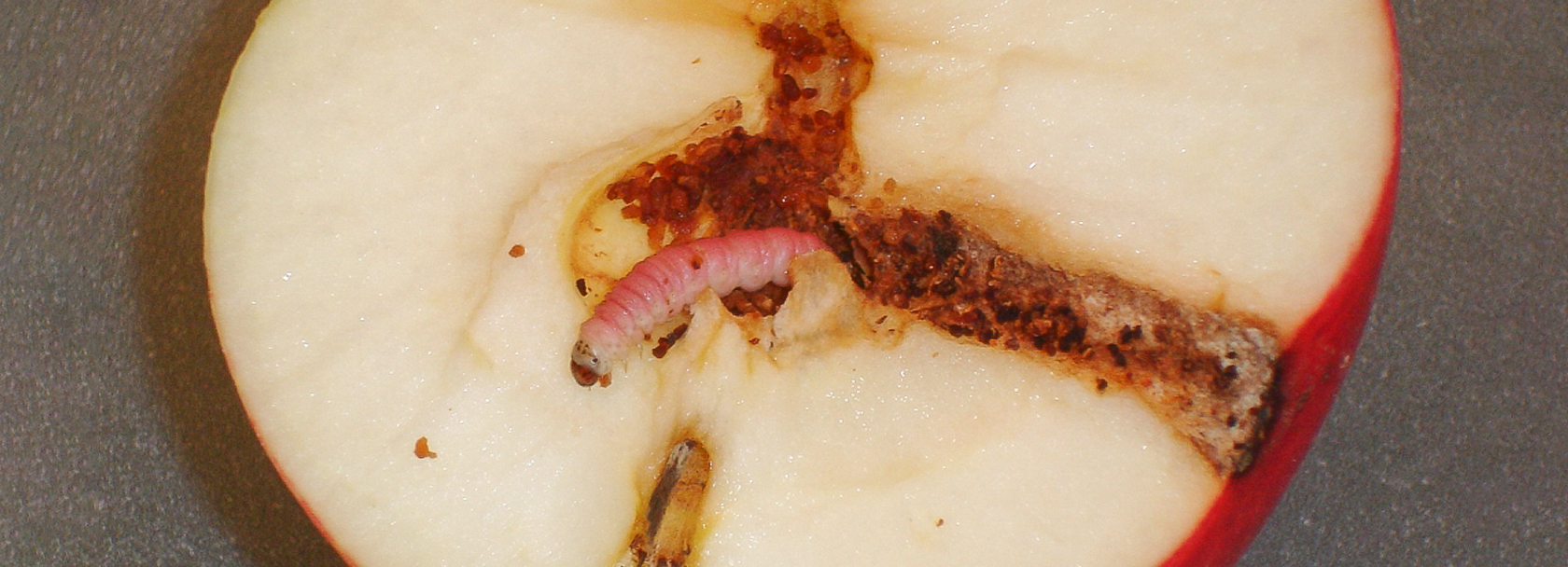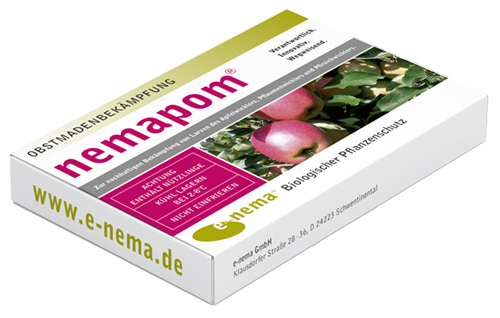Codling
Control codling moths biologically
Cydia pomonella
The codling moth is a butterfly (moth). Its larvae, also known as fruit maggots, are among the most important pests in fruit growing. It belongs to the moth family (lat. Tortricidae). The codling moth is grayish and about 10 mm long. It has light gray stripes on the wings and a copper-colored spot on the wing tips. Codling moth larvae, also called caterpillars, maggots or fruit grubs, are 20-30 mm long, initially white, later reddish, with a black head capsule.
Life cycle of codling moth
Depending on the region and temperature, 1-2 generations of codling moth can occur in a year. In May, the moths fly, laying their eggs on the developing apples. The maggots that hatch from them eat through the apples to the core. After 3 weeks, they leave the apple to pupate. The hatching of new moths occurs. Codling moth overwinters as a maggot that seeks a hiding place on the trunk, but sometimes on the ground. This is the ideal time for control with nematodes.
Damage caused by fruit maggots
Maggots developing from codling moth eggs cause the damage. The fruit maggots bore into the apple. The feeding of the codling moth larvae causes massive damage to the fruit and rot makes the apple inedible.

Which plants are attacked by codling moth larvae?
Fruit maggots mainly attack apples, but in warm years also pears, quince, peach, plum and walnut.
Control codling moth with beneficial nematodes.
Nematodes are tiny, thread-like soil organisms about 0.6 mm long. They are natural enemies of codling moth. The nematode species Steinernema feltiae specializes in codling moth larvae, among other things, and can use them for its own feeding and reproduction. The nematodes are supplied alive in a powder. For application, they should be mixed with water exactly according to package directions and applied to affected areas.
What stages of codling moth can be controlled with nematodes?
Entrapped, overwintering larvae of codling moth can be controlled biologically and sustainably with beneficial nematodes.
nemapom®
Control larvae of the codling moth biologically and effective with nemapom®
